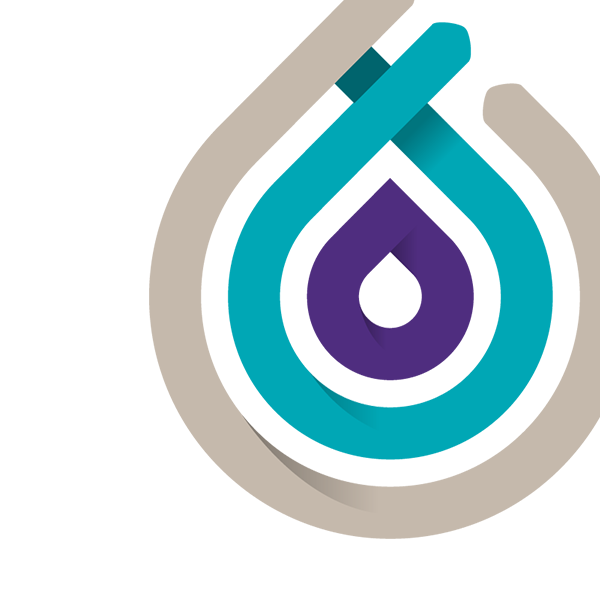-
Other audit services
We help clients with the application and use of foreign financial aid of EU and other funds and help prepare financial reports.
-
Audit calculator
The calculator will answer if the company's sales revenue, assets or number of employees exceed the limit of an inspection or audit.
-
Payroll and related services
We perform payroll accounting for companies whether they employ a few or hundreds of employees.
-
Tax accounting
Grant Thornton Baltic's experienced tax specialists support accountants and offer reasonable and practical solutions.
-
Reporting
We prepare annual reports in a timely manner. We help to prepare management reports and various mandatory reports.
-
Consolidation of financial statements
Our experienced accountants and advisors help you prepare consolidation tables and make the consolidation process more efficient.
-
Consultancy and temporary staff
Our experienced specialists advise on more complex accounting transactions, rectify poor historic accounting, and offer the temporary replacement of an accountant.
-
Outsourced CFO service
Our CFO service is suitable for companies of all sizes and in all industries. We offer services to our clients in the required amount and competences.
-
Assessment of accounting processes
We help companies to implement accounting practices that are in compliance with local and international standards.
-
Accounting services for small businesses
We offer affordable service for small businesses. We help organize processes as smartly and cost-effectively as possible.
-
Cryptocurrency accounting
We keep up with blockchain technology to serve and advise crypto companies. We are supported by a network of colleagues in 130 countries.
-
Trainings and seminars
Our accountants have experience in all matters related to accounting and reporting. We offer our clients professional training according to their needs.

-
Business advisory
We offer legal support to both start-ups and expanding companies, making sure that all legal steps are well thought out in detail.
-
Fintech advisory
Our specialists advise payment institutions, virtual currency service providers and financial institutions.
-
Corporate advisory
We advise on legal, tax and financial matters necessary for better management of the company's legal or organizational structure.
-
Transaction advisory
We provide advice in all aspects of the transaction process.
-
Legal due diligence
We thoroughly analyze the internal documents, legal relations, and business compliance of the company to be merged or acquired.
-
In-house lawyer service
The service is intended for entrepreneurs who are looking for a reliable partner to solve the company's day-to-day legal issues.
-
The contact person service
We offer a contact person service to Estonian companies with a board located abroad.
-
Training
We organize both public trainings and tailor made trainings ordered by clients on current legal and tax issues.

-
Business model or strategy renewal
In order to be successful, every company, regardless of the size of the organization, must have a clear strategy, ie know where the whole team is heading.
-
Marketing and brand strategy; creation and updating of the client management system
We support you in updating your marketing and brand strategy and customer management system, so that you can adapt in this time of rapid changes.
-
Coaching and development support
A good organizational culture is like a trump card for a company. We guide you how to collect trump cards!
-
Digital services
Today, the question is not whether to digitize, but how to do it. We help you develop and implement smart digital solutions.
-
Sales organisation development
Our mission is to improve our customers' business results by choosing the right focuses and providing a clear and systematic path to a solution.
-
Business plan development
A good business plan is a guide and management tool for an entrepreneur, a source of information for financial institutions and potential investors to make financial decisions.
-
Due diligence
We perform due diligence so that investors can get a thorough overview of the company before the planned purchase transaction.
-
Mergers and acquisitions
We provide advice in all aspects of the transaction process.
-
Valuation services
We estimate the company's market value, asset value and other asset groups based on internationally accepted methodology.
-
Forensic expert services
Our experienced, nationally recognized forensic experts provide assessments in the economic and financial field.
-
Business plans and financial forecasts
The lack of planning and control of cash resources is the reason often given for the failure of many businesses. We help you prepare proper forecasts to reduce business risks.
-
Outsourced CFO service
Our CFO service is suitable for companies of all sizes and in all industries. We offer services to our clients in the required amount and competences.
-
Reorganization
Our experienced reorganizers offer ways to overcome the company's economic difficulties and restore liquidity in order to manage sustainably in the future.
-
Restructuring and reorganisation
We offer individual complete solutions for reorganizing the structure of companies.
-
Corporate taxation
We advise on all matters related to corporate taxation.
-
Value added tax and other indirect taxes
We have extensive knowledge in the field of VAT, excise duties and customs, both on the national and international level.
-
International taxation
We advise on foreign tax systems and international tax regulations, including the requirements of cross-border reporting.
-
Transfer pricing
We help plan and document all aspects of a company's transfer pricing strategy.
-
Taxation of transactions
We plan the tax consequences of a company's acquisition, transfer, refinancing, restructuring, and listing of bonds or shares.
-
Taxation of employees in cross-border operations
An employee of an Estonian company abroad and an employee of a foreign company in Estonia - we advise on tax rules.
-
Tax risk audit
We perform a risk audit that helps diagnose and limit tax risks and optimize tax obligations.
-
Representing the client in Tax Board
We prevent tax problems and ensure smooth communication with the Tax and Customs Board.
-
Taxation of private individuals
We advise individuals on personal income taxation issues and, represent the client in communication with the Tax and Customs Board.
-
Pan-Baltic tax system comparison
Our tax specialists have prepared a comparison of the tax systems of the Baltic countries regarding the taxation of companies and individuals.
-
Recruitment services – personnel search
We help fill positions in your company with competent and dedicated employees who help realize the company's strategic goals.
-
Recruitment support services
Support services help to determine whether the candidates match the company's expectations. The most used support services are candidate testing and evaluation.
-
Implementation of human resource management processes
We either assume a full control of the launch of processes related to HR management, or we are a supportive advisory partner for the HR manager.
-
Audit of HR management processes
We map the HR management processes and provide an overview of how to assess the health of the organization from the HR management perspective.
-
HR Documentation and Operating Model Advisory Services work
We support companies in setting up HR documentation and operational processes with a necessary quality.
-
Employee Surveys
We help to carry out goal-oriented and high-quality employee surveys. We analyse the results, make reports, and draw conclusions.
-
HR Management outsourcing
We offer both temporary and permanent/long-term HR manager services to companies.

-
Internal audit
We assist you in performing the internal audit function, performing internal audits and advisory work, evaluating governance, and conducting training.
-
Internal Audit in the Financial Services Sector
We provide internal audit services to financial sector companies. We can support the creation of an internal audit function already when applying for a sectoral activity license.
-
Audit of projects
We conduct audits of projects that have received European Union funds, state aid, foreign aid, or other grants.
-
Prevention of money laundering
We help to prepare a money laundering risk assessment and efficient anti-money laundering procedures, conduct internal audits and training.
-
Risk assessment and risk management
We advise you on conducting a risk assessment and setting up a risk management system.
-
Custom tasks
At the request of the client, we perform audits, inspections and analyzes with a specific purpose and scope.
-
External Quality Assessment of the Internal Audit Activity
We conduct an external evaluation of the quality of the internal audit or provide independent assurance on the self-assessment.
-
Whistleblowing and reporting misconduct
We can help build the whistleblowing system, from implementation, internal repairs and staff training to the creation of a reporting channel and case management.
-
Sustainability advisory
We help solve issues related to the environment, social capital, employees, business model and good management practices.
-
Sustainability audit
Our auditors review and certify sustainability reports in accordance with international standards.
-
Sustainable finance
We help investors to analyze the environmental issues, social responsibility and good management practices of the company of interest.
-
Sustainable tax
Our international tax specialists define the concept of sustainable tax behavior and provide services related to sustainable tax behavior.
-
Digital strategy
We help assess the digital maturity of your organization, create a strategy that matches your needs and capabilities, and develop key metrics.
-
Intelligent automation
We aid you in determining your business’ needs and opportunities, as well as model the business processes to provide the best user experience and efficiency.
-
Business Intelligence
Our team of experienced business analysts will help you get a grip on your data by mapping and structuring all the data available.
-
Cybersecurity
A proactive cyber strategy delivers you peace of mind, allowing you to focus on realising your company’s growth potential.
-
Innovation as a Service
On average, one in four projects fails and one in two needs changes. We help manage the innovation of your company's digital solutions!

Life has changed drastically in recent months - preventing the spread of the coronavirus has forced us to maintain social distance, and this affects both our private and professional lives. Many companies are operating in a new reality, where they need to react quickly and make important decisions based on limited information in order to survive.
In a crisis, companies need to be able to respond quickly to change and to meet the needs of their employees, customers and partners, while managing the company's financial and operational challenges.
A risk materialized that was not present in many risk analysis
Due to the fact that many companies did not consider such a risk of such nature and extent to be realistic and did not consider possible mitigating measures, many companies are in a situation where they are engaged in putting out fires. There are certainly companies that had defined the risk of a pandemic, but likely only a few who were able to predict such a large-scale impact of the virus on the company's operations, were able to react skillfully in the event of an unexpected crisis, or had a definite action plan.
The potential impacts of such a risk - business sustainability, supply chain disruptions, changing customer behavior and expectations, lack of critical resources and business continuity gaps - can be identified and discussed during the brainstorming exercise, but this exercise is certainly not easy and it will not be possible to identify all the implications.
Five topics that are essential to analyze
Nevertheless, each company could analyze how the following objectives have been achieved in a crisis situation.
-
Safety and well-being of employees, ensuring the exchange of information and primary crisis management
In a crisis situation, the first steps should be taken to ensure the safety and well-being of their employees, ie to enable people to work in a safe working environment (including teleworking) and to communicate through secure channels. Did your company manage the teleworking well? If not, what should be changed to make the transition smooth next time? How to keep the emplyees working from home motivated? Was all the necessary information about solutions, codes of conduct, etc. easily accessible to employees from one channel?
It should also be assessed how to manage the crisis - were you able to quickly assemble as diverse a crisis management team as possible to ensure the widest possible view of the company's activities in a difficult situation?
-
Durability of information systems and their support for management
Information systems include applications, architecture, data, cloud, infrastructure and network - their operation, adequacy and security. In a situation where more and more activities moved from the physical environment to information systems, was the company able to continue working smoothly? Are the information systems suitable for teleworking and allow for electronic meetings and efficient file exchange? Is all this possible as the volume of electronic transactions grows? Is data and information for decision-making easily and real-time available to make quick and well-informed decisions? Is the information stored securely, even in a crisis situation?
-
Operation of priority processes, including ensuring the stability of supply chains and production, restoring confidence
In a situation of limited possibilities, priorities and critical processes, the supply chain (for the movement of goods and services), stakeholders should be identified, and how to maintain or restore stakeholder confidence in the company's services or products should be assessed.
Was the company prepared for obstacles in the supply of products / services and could the company continue to operate? Are the risks sufficiently diversified to stabilize the supply chain? For example, did the company have adequate security stocks and alternative sources of supply, was cooperation with suppliers ensured, were there temporary solutions or alternative (unusual) production options and, if necessary, the possibility to use contract or temporary staff? Did you succeed in restoring trust in your products / services and were the channels defined through which this was done and how?
-
Customer focus
When we find ourselves in a difficult, unprecedented situation where many things have changed for a company, it is tempting to think that the rules for building a successful company have also changed. While the world may be upside down right now, customer retention is more important than ever. This means communicating with customers, you need to be creative and think carefully about what they need in this ever-changing world.
Were we able to remember, keep in touch and identify their needs in difficult times? This virus makes us think about how we run our businesses, society and lives. Keeping your customer at the center of all your decisions, even in a crisis like this, will lay the foundation for a successful business even when we return to normal.
-
Willingness to change the company's current practices
The changed world may require a change in the company's business practices, whether it is the need to move some of its activities to e-channels or to expand the range of current products or services. If your company needs highly integrated systems to operate, you could consider using modular systems, where the units or sources of supply associated with your business can be combined in different ways. This can provide greater resilience to unexpected situations.
I also recommend talking about your crisis response plans with business partners and companies in the supply chain in order to step up joint efforts to deal with crisis situations.
Every company can learn from the current situation and analyze what are the critical processes in the operation of the company and which activities help or would have helped to best manage the negative effects of the crisis. Therefore, the response to the situation and its impact could be recorded now, in times of crisis, so that best practices (success stories) can be identified.
Now that the restrictions and government measures have eased, we could start thinking about what will happen after the crisis - will we return to our normal routines or should we change something in our actions? What can we learn from the current situation, what we have already learned? After all, every crisis and mistake is a valuable learning opportunity that cannot be wasted. Do not allow the current crisis to prevent you from moving on to the next one.










